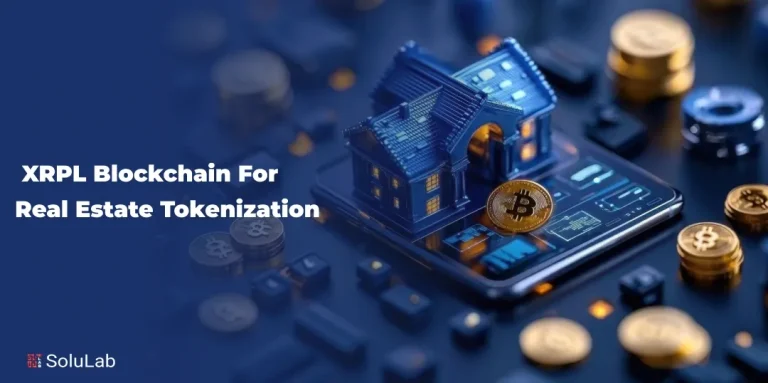The emergence of cryptocurrencies is very clearly explained by the hyper-activeness of the market. Each of the crypto freaks is looking forward to a better currency that could bring about better solutions as compared to the ones that already exist. To date, the creation of content and drawing profits out of the same was only possible with the presence of intermediaries as well as hosting platforms. This, in turn, only results in the creation of a mess in the process of sharing profits with the intermediaries. But, with the emergence of non-fungible tokens or NFTs, it has been like a rescue operation in favor of content creators providing them with the rights along with the profits that they actually deserve.
The use-cases of non-fungible tokens are rapidly increasing. The adoption of these tokens is at its peak, attracting a huge volume of investment into different sectors, thereby resulting in technological advancement. The potential held by non-fungible tokens goes beyond just digital arts. It has certainly done wonders for licenses and intellectual property. The time is not very far where the users would be able to buy their dream house as a non-fungible token and then borrow against the property by collateralizing it through decentralized finance. In addition to this, NFTs are on their way to unlocking a wide range of possibilities, liquidity, and value in almost every sector.
Understanding an NFT Marketplace
NFT marketplaces, as can be understood from the name, are platforms where NFTs can be stored, displayed, traded, and in some cases minted or created. Non-fungible tokens are virtual tokens that represent ownership of something inherently distinct and scarce. It can be a physical or digital item like artwork, a collectible, a soundtrack, an in-game item, or real estate. In contrast to fiat money like USD or regular cryptocurrencies like Bitcoin, NFTs are special types of digital assets that cannot be mutually exchanged for one another. It is because of the fact that each of the tokens has a specific value based on its unique traits and attributes. Moreover, in contrast to regular cryptocurrencies, non-fungible tokens cannot be bought on centralized or decentralized crypto exchanges. Instead, the non-fungible tokens are listed and traded on online marketplaces referred to as NFT marketplaces that are specially created for the NFTs. It is precisely where the need for NFT marketplace development arises.
NFT Marketplace Development
With the growing popularity of non-fungible tokens, the developers have been quite busy in the creation of markets for these files. At present, there exist some current markets that happen to be general trading spaces for any category of non-fungible tokens. But on the other hand, there are marketplaces specially developed to cater to the needs of the high-end art world or deal with files that are related to specific online games or niche topics. With the increasing demand for the marketplaces, NFT marketplace development has become a top choice for developers.
Now, let us dive a bit deeper into the topic to understand the top features that play a significant role in making the NFT marketplace development a great success.
Storefront
A marketplace for non-fungible tokens is quite similar to an e-commerce site. It needs a front-end storefront that should be attractive as well as intuitive. For example, for physical art collectors, the buyers of non-fungible tokens intend to know the origin and authenticity of their files. Moreover, they also want a listing of the rarity of their non-fungible tokens. It is not possible to copy an individual non-fungible token, but the artists can release multiple non-fungible tokens of the same image. The NFT marketplaces give these images a label number.
Searching for Items
At the time when an NFT marketplace is developed, the scope of the files to be traded needs to be decided. To get the best out of the newly developed marketplaces, they tend to focus on a specific niche. Whatever is listed on the marketplace, a search function is required for the purpose of making the buying process faster by easily searching for the required items.
Filtering of Searches
Filters make it easy to navigate the site especially when the marketplace has a lot of collectibles. The functionality behind this feature is similar to the search option since the main idea is to help in choosing the right item quickly and without much effort. All items on offer can be very easily divided into different categories that impact the decisions of the buyers in most situations and at the same time plays a vital role in improving the experience of the buyers. With the help of this filtering feature, the buyers can very easily sort items by different categories like price, artist, rarity, payment method, listing status, best-selling, hot offers, etc.
Creation of Listings
The NFT marketplace should be developed in a way that provides a positive experience to both buyers as well as sellers. At any point in time a user wishes to list a file, the marketplace should provide an easy and hassle-free path to make it convenient. The marketplace should be able to provide the user with clear uploading instructions as well as forms that provide selling information. With the help of this feature, users should be able to upload files and fill in the token information like name or title, tags, and description.
Listings’ Status
Both the buyers and sellers in any of the NFT transactions require information about the process. For the sellers, the NFT marketplace can list data regarding the number of people who viewed the file and bids made during an auction. The site should also be able to alert them when someone makes an offer. For the buyers, they want to know whether the file has gone through an authentication process prior to making a purchase. It is because verified items are much more attractive to collectors. Thus the feature of listing’s status is an important one for success.
Buying, Bidding, and Auction
The NFT marketplace should necessarily have a feature that allows users to buy and bid for the non-fungible tokens listed on the platform. The bidding feature should also include a date of expiration of the bid and allow each of the users to view details about the current status of the bid.
Wallet
The NFT Marketplace should have a wallet that allows the users to easily store, send and receive NFTs. The users are worried about the security of their crypto wallets since they are pieces of financial information. The newly developed NFT marketplace should allow users to work with their present crypto wallet solutions which is the easiest way to integrate the feature into the platform.
Ratings
Ratings happen to be an extremely helpful feature for both the buyers as well as the sellers. People are very likely to engage in business activities with those having strong reputations. The rating feature can also help prevent negative behaviors such as untrue representation or backing out of a transaction before the smart contract goes into effect.
Conclusion
Once you have decided the features to implement during NFT marketplace development to make it successful, it is of immense importance to consider the technical implementation of the project. It is always recommended to spend some time deciding on some of the tech aspects of the project. At the same time, it needs to be decided whether to use ready-to-use instruments or come up with the solution from scratch which would require more investment as well as time. Therefore, a decision should be taken as per the feasibility and proceed accordingly.




